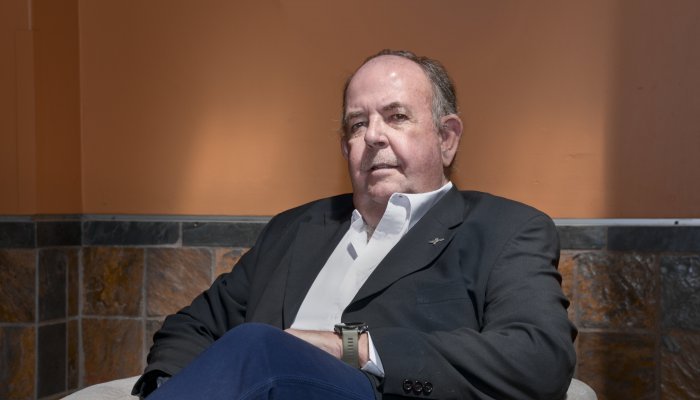Humane leadership, with its core values of empathy, authenticity, and purpose, is not a choice but a necessity in today’s complex business landscape. Leadership is no longer confined to a single context. Instead, leaders are now expected to navigate technological, societal, economic, and political contexts.
(In some research, authentic leadership, transformational leadership, and charismatic leadership have been combined under the concept of humane leadership. So for the purposes of this article, the terms transformational and humane leadership are used interchangeably.)
Old business models and leadership styles are falling short of what is needed for organisations to thrive in this world. Legacy models that are rooted in patriarchal, bureaucratic hierarchies are not able to adapt quickly enough to remain ahead of the storms battering businesses. Humane leadership, with its more inclusive approach, enables organisations to better adapt and pivot.
The complexity of organisational transformation
Businesses need to move away from traditional organisational forms to involved and empowered partnerships, with learning taking place across the organisation through collaboration. Past paternal bureaucracies did not need empowered people – except near the top. To be agile and adaptable, organisations need all people to feel empowered in their lives, work, and leadership. As such, there is a need for personal development across the organisation, and this must be prioritised, starting in the boardroom.
This transformation, however, is not without its challenges. When it comes to organisational transformation (OT), up to 70% of efforts fail. Traditional linear approaches fall short of addressing the interconnected elements of change, as components such as community engagement, leadership style, and organisational culture are not always appreciated. This is where complexity theory can offer a fresh perspective. Complexity theory is the study of complex and chaotic systems and how order, pattern, and structure can arise from them. Simply put, it recognises that organisations exist within a web of relationships.
That means that structure and order can be attained through engagement with people, be it with employees or the community. Engagement is the critical interface between the institution and the stakeholders and ultimately influences how organisations can stay relevant in terms of the various contexts in which they operate. This focus should ideally be on the long term, because the above-mentioned contexts, especially in the modern business environment, are continuously shifting and evolving. Leaders need to accept complexity as part of their reality.
The role of humane leadership in OT
Humane leadership is central to successful OT. Transformational leaders who can inspire and empower their stakeholders are better suited to navigate ambiguity and uncertainty. Their focus on purpose, ethical behaviour, and long-term impact better aligns with the complex nature of transformation because humane leaders foster a culture of learning, adaptability, and innovation and can transform organisational culture as they empower employees across the business.
Empowerment helps align people’s behaviour with the organisation’s vision. It is the ability to create or to bring into being the results that really matter. While leaders need to be empowered to create the needed change, humane leaders have the ability to transform their own personal empowerment into employee empowerment.
Transformational leaders set an example for how they want others to act; they encourage employees to become responsible for their roles and, by doing so, orient the entire organisation to be and act responsibly with the outside world in mind.
Humane leaders are also able to change the system. Businesses require agility and adaptability, two characteristics that systems resist. However, systems determine performance because they offer stability and equilibrium and are, therefore, resistant to change. Humane leaders are able to drive that change. But changing leadership styles can only be achieved if leaders are deliberate, themselves, to adapt and pivot.
Deliberately developmental leadership: A construct for growth
Deliberately developmental leadership (DDL) is an emerging construct that emphasises continuous growth and learning. Unlike traditional leadership models, DDL focuses on personal development as a means to enhance organisational effectiveness. Key features of DDL include:
- Radical transparency: Leaders openly share their vulnerabilities, mistakes, and growth areas. This transparency encourages others to do the same, fostering a culture of mutual learning.
- Feedback-rich environment: DDL promotes ongoing feedback loops. Leaders actively seek feedback and view it as an opportunity for growth. They encourage team members to provide candid input.
- Challenging assignments: DDL involves intentionally assigning leaders to challenging roles or projects. These assignments stretch their capabilities and accelerate development.
- Developmental practices: Leaders engage in deliberate practices such as journalling, coaching, and peer mentoring. These practices enhance self-awareness and promote continuous improvement.
In the current challenging landscape, leaders need to be deliberately developmental about choosing a humane leadership style. Humane leadership is a highly evolved and integrated style that requires a developmental approach. By combining self-awareness, feedback, and intentional growth, leaders can enhance their effectiveness. DDL aligns with the complexity of OT and emphasises adaptive learning and resilience.
A useful framework in this regard is the leadership circle framework, which integrates DDL principles to determine which leadership styles will enhance humane leadership.
The leadership circle
The leadership circle profile (LCP) is a sophisticated psychometric instrument designed to assess and develop leadership capabilities. It offers a holistic view of an individual’s effectiveness by integrating traditional competency-based approaches with insights from developmental psychology and behavioural sciences. The LCP aligns closely with Robert Kegan and Lisa Lahey’s three plateaus of adult mental development: the socialised mind, the self-authoring mind, and the self-transforming mind.
The LCP is structured around two primary dimensions: creative competencies and reactive tendencies. Creative competencies, such as relating, self-awareness, authenticity, systems awareness, and achieving, enhance organisational effectiveness and correlate positively with successful leadership. Reactive tendencies, including complying, protecting, and controlling behaviours, are self-limiting and driven by underlying fears and anxieties, undermining leadership effectiveness.
Using a 360-degree feedback mechanism, the LCP gathers insights from the leader themselves and their peers, direct reports, and superiors. This provides a balanced view of the leader’s behaviours and impact. The detailed report visualises scores across various competencies and tendencies, highlighting areas of strength and development.
[graph]
An example of a leadership circle profile. Source: https://leadershipcircle.com/leadership-assessment-tools/leadership-circle-profile/
Lahey and Kegan’s three plateaus of adult mental development provide a useful framework for understanding the LCP’s approach:
- The socialised mind: Leaders at this plateau are shaped by external expectations and norms, often exhibiting reactive tendencies such as complying behaviours, which are driven by the need for acceptance and approval.
- The self-authoring mind: Leaders develop their internal belief systems and values, guiding actions independently of external influences. Creative competencies such as self-awareness and authenticity resonate with this level as leaders become more self-directed and authentic.
- The self-transforming mind: Leaders integrate and transcend multiple perspectives, recognising the complexity of systems and relationships. The LCP’s focus on systems awareness and deep self-awareness aligns with this advanced level, encouraging a holistic and adaptive leadership approach. At this level, leaders are able to multi-frame and hold contradiction. They are engaging with context, not to try to reach a specific objective, but to learn from the context and the complexity of that context. They accept that there is no one answer. They take a much more considered, reflective, and appreciative approach.
Robert Kegan and Lisa Lahey’s three plateaus of adult mental development
By linking the LCP with these developmental stages, it becomes clear how the instrument facilitates growth from reactive to creative leadership, fostering deeper self-awareness and transformative change. Leaders can use the LCP to progress through these stages, enhancing their effectiveness and their organisations’ performance.
This flows into the context of ambidextrous leadership, which is a stand-alone leadership construct. In the context of this article, the ambidextrous leadership construct can be described as exploiting the present while exploring the future.
No shortcut to becoming a great leader
While a discussion on leadership skills and techniques is useful, there is no shortcut to becoming a great leader. It takes deeper developmental work. Humane leadership almost needs to become a lifelong discipline. Leaders can no longer simply wish for something better.
However, the move to a humane leadership style is not a difficult and binary choice. It is not a trade-off between being empathetic and caring or tough and effective. What is being asked of leaders is to instil two ingredients into the leadership style – wisdom and compassion. It is about leading with others in mind, asking how they can listen, be of benefit, and empower people to be the best version of themselves.
Humane leadership, infused with DDL, is a powerful force for positive change. As board members embrace these principles, they contribute to purpose-driven organisations that prioritise both people and prosperity. This is not easy. So where do you start? You start by taking an honest view of where you are. Based on that, you create a deliberately developmental plan for yourself.
The conundrum is that being humane looks different for everyone. Right now, being humane to Israel is very different to being humane to the residents of Gaza. And it is these questions that we need to wrestle with, because the self-transforming mind will understand that there is no one answer.
KEY TAKEAWAYS
- In a VUCA (volatile, uncertain, complex and ambiguous) world, leadership styles need to be transformed to be more inclusive, compassionate, collaborative, and wise.
- Humane leadership at the board level is essential to ensure organisations are able to pivot and adapt in a world that is becoming increasingly complex and uncertain.
- Understanding the framework of complexity theory can help leaders understand why relationships are key to managing uncertainty.
- Leaders have to become intentional in their approach, and deliberately developmental leadership tools could help the process.
- The leadership circle is an excellent framework to help leaders understand what strengths aid a humane leadership style.
- Moving towards a humane leadership style is not an easy process, and it requires leaders to commit to a lifelong transformational journey.








